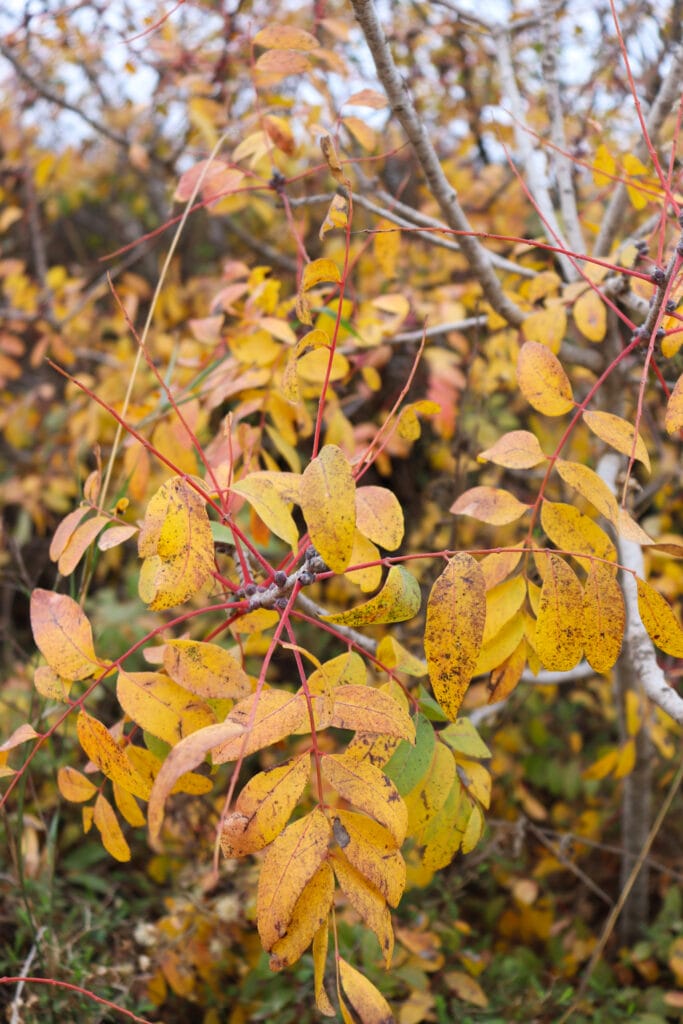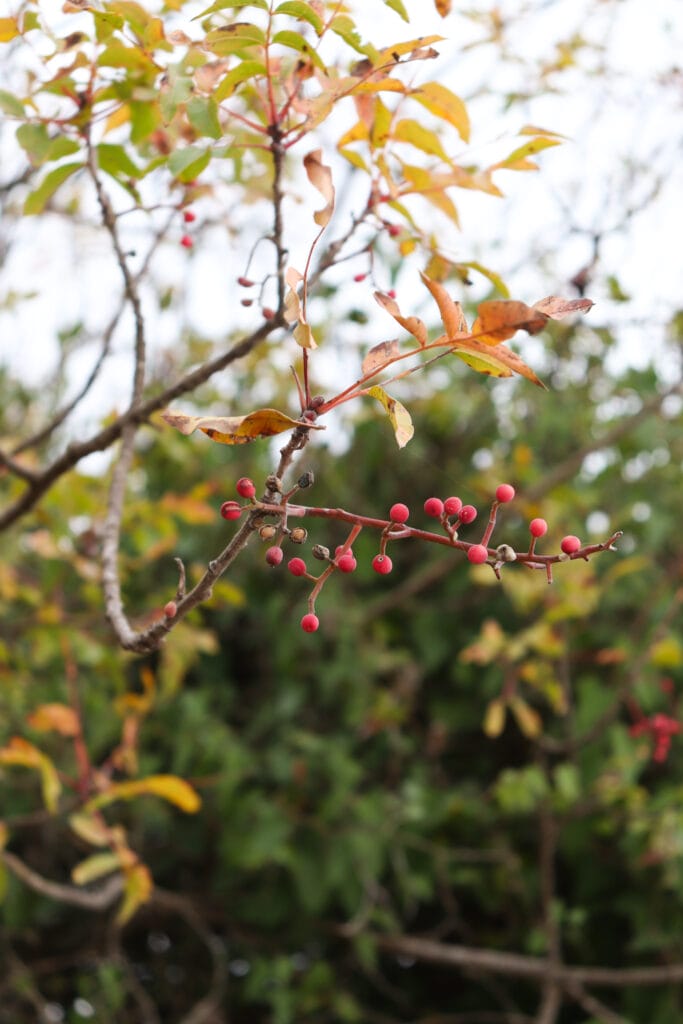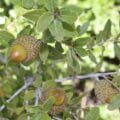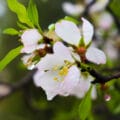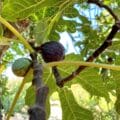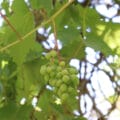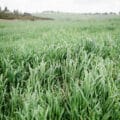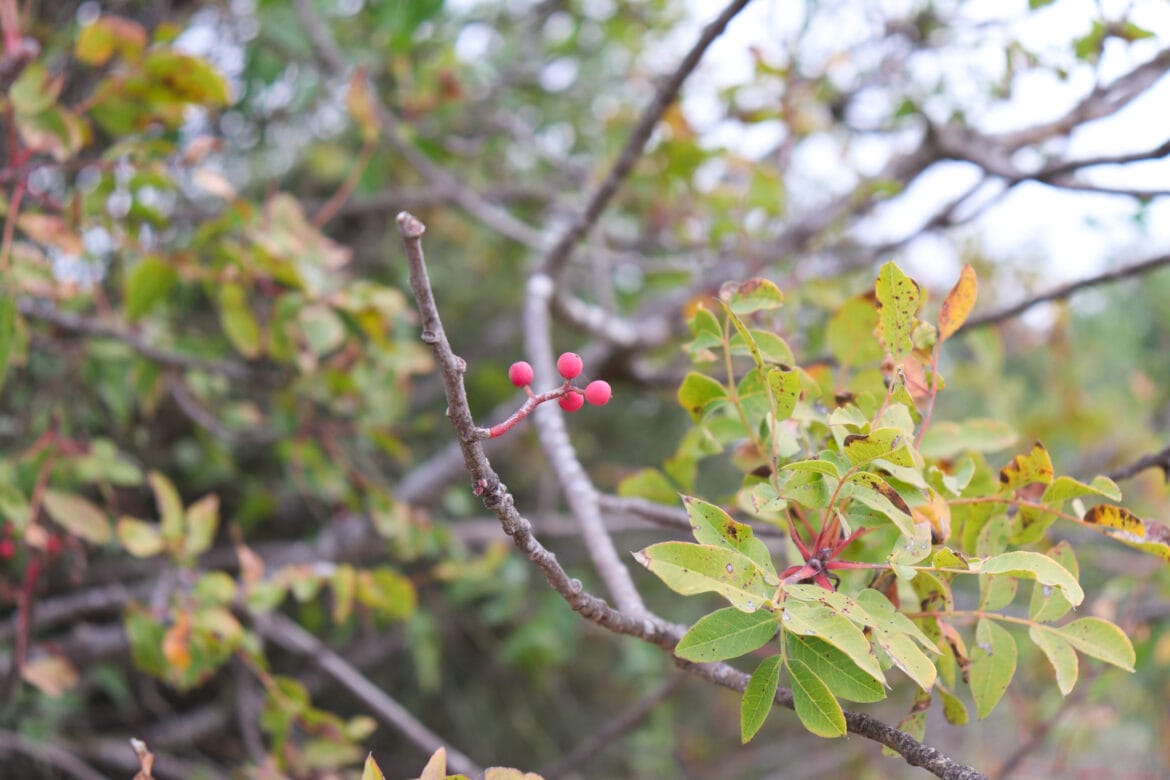
by Elly Waller, guide at Neot Kedumim
Profound messages from our prophets, kings and rabbis were drawn from references to nature. We can only fully understand their meaning if we learn about the trees, flowers and plants they mention.
In Part Two of this article on tall trees, I will focus on the terebinth, or “ela”.
Ela: Terebinth Trees
Pistacia lentiscus Lentisk אלת המסטיק is a evergreen bush. It is also called the mastic tree.
In 2019 at Neot Kedumim we assisted Professor Zohar Amar when he came to conduct research and collect samples of sap. We made cuts in 100’s of branches and the distinctive turpentine scented sap oozed out. There are those who believe this sap or resin was the צרי ‘tzori’ or balm mentioned in Genesis 43 – one of the choice products of the land of Israel Jacob chose to send as a gift to the rulers in Egypt. The Midrash identifies this sap with לֹ֔ט ‘lot’ or laudanum mentioned in this same verse. Mastic is the word for chewing gum in Hebrew and for centuries people have chewed the gummy sap as a breath freshener and to clean their teeth.
Pistacia palaestina Terebinth אלה ארץ ישראלית tends to grow in the shape of a shrub rather than a tree especially after being damaged by fire or animals. It has red young shoots and leaves that turn green and then red again before falling. The leaflet ends have pointed tips and banana shaped galls. The red and dark blue fruit is ripe in the fall and is edible raw or roasted. Oil can be extracted from the fruit for medicinal purposes and for cooking. Their oil and fruit are anti-allergenic and anti-inflammatory.
Pistacia atlantica Atlantic pistachio אלה אטלנטית is the largest type of ‘Ela’ tree. There are trees dating up to 600 years old. The leaves redden before falling, and together with Pistacia palaestina they provide Israel with its loveliest example of fall foliage. The leaflet tips are not pointed and it has coral shaped galls. The galls were used by tanners working to soften leather. The fruit is edible and used as a spice. Oil is extracted from the fruit for domestic use, for medicine and light. The wood was used for timber.
Terebinth in the Tanach
In Samuel II 18, 9 King David’s rebellious son Avshalom is apprehended and killed when he rides his mule beneath a terebinth and his long hair gets tangled up in the branches and he is caught, dangling in the air..
וְאַבְשָׁל֞וֹם רֹכֵ֣ב עַל־הַפֶּ֗רֶד וַיָּבֹ֣א הַפֶּ֡רֶד תַּ֣חַת שׂ֩וֹבֶךְ֩ הָאֵלָ֨ה הַגְּדוֹלָ֜ה וַיֶּחֱזַ֧ק רֹאשׁ֣וֹ בָאֵלָ֗ה וַיֻּתַּן֙ בֵּ֤ין הַשָּׁמַ֙יִם֙ וּבֵ֣ין הָאָ֔רֶץ וְהַפֶּ֥רֶד אֲשֶׁר־תַּחְתָּ֖יו עָבָֽר
But which kind of ela or terebinth was it? The battle took place deep in the forest. We know that the Palestinian terebinth commonly makes up a dense forest, most often together with oak trees. On the other hand, the tree had to be tall enough for a mule and rider to pass beneath the branches. So, it was probably the Atlantic pistachio, the taller tree, that caught Avshalom by the hair.
Is a Baca tree a Terebinth?
We have always been intrigued by the sounds of the forest, the rustle of the leaves, the sighs and creaks of the wind in the branches. In the Talmud the rabbis suggested the woods were whispering a prophecy called sichat dekalim or ‘the speech of the palm trees’. Rabbi Yochanan Ben Zakai could speak this language.
The baca trees send a message:
Samuel II 4, 24
וִ֠יהִ֠י (בשמעך) [כְּֽשׇׁמְעֲךָ֞] אֶת־ק֧וֹל צְעָדָ֛ה בְּרָאשֵׁ֥י הַבְּכָאִ֖ים אָ֣ז תֶּחֱרָ֑ץ כִּ֣י אָ֗ז יָצָ֤א יְהֹוָה֙ לְפָנֶ֔יךָ לְהַכּ֖וֹת בְּמַחֲנֵ֥ה פְלִשְׁתִּֽים

And when you hear the sound of marching in the tops of the baca trees, then go into action, for the LORD will be going in front of you to attack the Philistine forces.”
Baca means’cry’ in Hebrew and according to the Midrash, baca is a prickly plant and whoever touches it weeps in pain. Others said the tree was named baca (cry, in English) because when you cut the tree it drips with sap, reminiscent of tears falling.
Scholars explain that baca trees were probably Pistacia lentiscus Lentisk because this battle took place in a region where these sap rich shrubs form thickets whose branches lie low on the ground. When the Philistine soldiers trod on the hard leaves of the “tops of the baca trees” King David could hear the rustle of the leaves in the distance. After this warning King David knew when to strike and the dense thickets of lentisk would trap the enemy army passing through.
Bringing History to Life in Nature
We hikers exercise our legs, we breathe fresh air, enjoy each other’s company and observe the plants and flowers up close. Even when I return time and again to my favourite local trail, the view is never quite the same from one day to the next. There are always surprises – a wonderful bird, a newly blooming flower, something to taste. Seeing a living plant or tree that you have read about in an ancient text brings the source to life and helps you visualise the scene from long ago. We gain both a new dimension of appreciation for nature and a deeper level of understanding of the written account.
I’m Elly Waller. I’m originally from Melbourne, Australia and I live in Modi’in with my husband and 4 kids.
I’m a speech therapist and I run English language programs for children.
The only thing I like better than hiking, running and painting in nature is studying Tanach. At Neot Kedumim I’m encouraged to roam around with a Bible in hand, so it’s a dream job.
I’d love to share more of what I’ve learned with you when you come visit.


